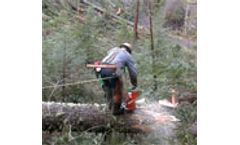Cattle Grazing Articles & Analysis
7 news found
The University of Florida, in partnership with Florida Foundation Seed Producers Inc., has released two new limpograss cultivars so ranchers can increase the forage variety they feed their cattle. Florida beef cattle producers use limpograss, a warm-season, perennial grass for its high digestibility, cool-season growth and tolerance to poorly drained soils. The ...
Hormone, Antibiotic and Steroid free! Our cattle graze freely throughout their lives, eating the all-grass diet nature intended, to become robust and healthy. ...
The researchers also compared the effects of cattle grazing versus mowing, and found that mowing resulted in higher numbers and greater diversity of pollinators. ...
Cutting at a later stage also has consequences for farm management: grazing is more difficult as parcels for cutting have to be left to grow for longer. ...
They considered the entire cycle whereby cattle produce manure, which is then incorporated into the soil, absorbed by crops and fed back to the animals via feed. ...
Pasturelands have been found to be major sources of sediment, phosphorus and pathogens in Midwest surface water resources. While poor grazing management may lead to contaminated surface water, little is known about the specific amount of pollution in pasture streams that can be attributed to grazing cattle. ...
The study's findings seem to demonstrate that forests are more likely to be protected and well-managed when communities have a stake in the process and have alternatives to clearing land for cattle grazing, farming, and other less sustainable activities. The study is based on data collected from the Wildlife Conservation Society, satellite imagery from the ...





